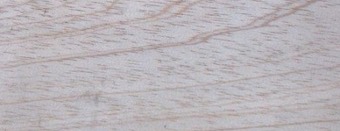

About
We Are a family run Business that aim to help people in the purchase of Building products . With over 40 years expereince in the building supply industry we aim to do our best in helping people find the right product or at least point them in the right direction to companys that can help.
Brochures and links
Kaudamu
Botanical name: (Myristica buchneriana)
Common Names: Darah darah,Duguan,Kaudamu,Kumpang,Mutwinda,Nutmeg,Penarahan,Tambolau
Environmental Profile
The environmental status of this species within its geographical range has not been officially determined.
TECHNICAL DATA
Species Name: Kaudamu
Botanical name(s): Myristica spp
Size and location information: Medium to large tree, predominately from Fiji, with some found in Indonesia, Malaysia, Philippines.
Density: Dry: 580kg/m3
Durability: In ground: Class 4 Above ground: Class 4
Lyctids Susceptibility : Yes
Termite Resistance (AS3660) : No.
Strength Group: S6/SD6
Workability : Kaudamu is easy to saw and plane, generally working well and producing smooth, clean-cut surfaces and crisp edges.
Uses : Interior joinery and mouldings.
Availability : Limited imports.
Distribution,
Species in the Myristica genus are reported to be distributed in the Indo-Malayan region, Indonesia, Philippines, and Western Pacific Islands.
Product Sources
It is currently unknown whether material from this species is available from sustainably managed, recycled, salvaged, or other environmentally responsible sources.
Mature Myristica trees are reported to vary in size from medium to large. They usually attain a height of 60 to 90 feet (18 to 27 m), with a trunk diameter of 12 to 30 inches (30 to 75 cm) over occasional and medium-sized buttresses. Boles are often straight and of good form.
Sapwood ColorThe sapwood is lighter in color than the heartwood and is not clearly demarcated.
Heartwood Color:The heartwood is light reddish brown, dull brown, brownish-gray or olive-gray in color.
Grain:The grain is typically straight.
Texture :Texture is described as rather fine to slightly coarse.
Odor : There is no distinctive odor or taste.
Ease of Drying :The timber is reported to dry rather slowly with little degrade.
Drying Defects : Thinner material may warp during drying.
Kiln Schedules T10 - D4S (4/4) US
Movement in Service:The wood is reported to exhibit medium movement after manufacture.
T/R Ratio
Natural Durability
The heartwood is reported to be susceptible to attack by termites and decay fungi. The sapwood is vulnerable to powder-post beetle attack.
Resistance to Impregnation :The timber is reported to respond readily to preservative treatment.
Veneering
Selected European lime logs are reported to be sliced into veneers for decorative applications. Plywood resistance to weathering effects upon exposure is reported to be good.
Blunting : The wood has slight dulling effect on cutters.
Resistance to Cutting
Cutting resistance is rather low, and the timber is reported to saw without difficulty.
Planning : The timber planes easily with ordinary tools to yield clean surfaces.
Turning :Turning operations are reported to be very easy.
Boring : Boring properties are reported to be very good.
Routing and Recessing:The wood routs and recesses easily.
Mortising : Mortising operations are reported to be good.
Moulding : The timber is reported to mould easily with ordinary tools.
Carving : European lime is reported to be well suited for carving since has high resistance to splitting when cut in any direction.
Gluing :The timber is reported to respond well to gluing.
Nailing : Nailing properties are reported to be rather poor. The timber tends to split in nailing.
Screwing
Sanding :The timber is reported to have good sanding properties.
Polishing:Polishing characteristics are reported to be good.
Staining : The timber is reported to respond well to most finishes.
Painting
Steam Bending
The timber is reported to be suitable for bends of moderate radius. Steam bending qualities are rated as moderate and cannot be improved to any degree with supports and straps.
Response to Hand Tools :The timber responds very well to hand tools.
Strength Properties
Bending strength in the air-dried condition (about 12% moisture content) is medium, but lower than Mahogany, and much lower than White oak. Its strength in compression parallel to grain is medium, but ower than that of Teak. It is not hard and can be dented and marred easily. It is of average, or medium, density.

Gallery







